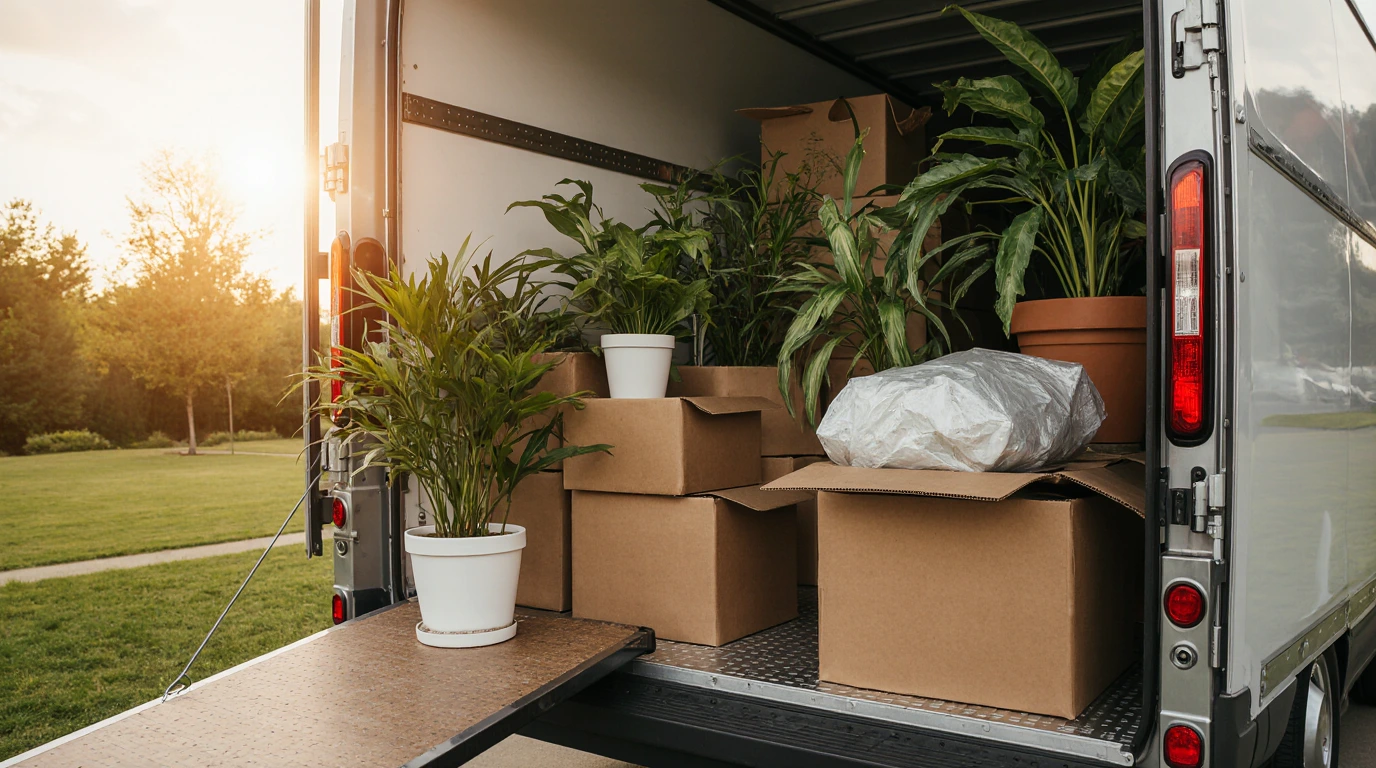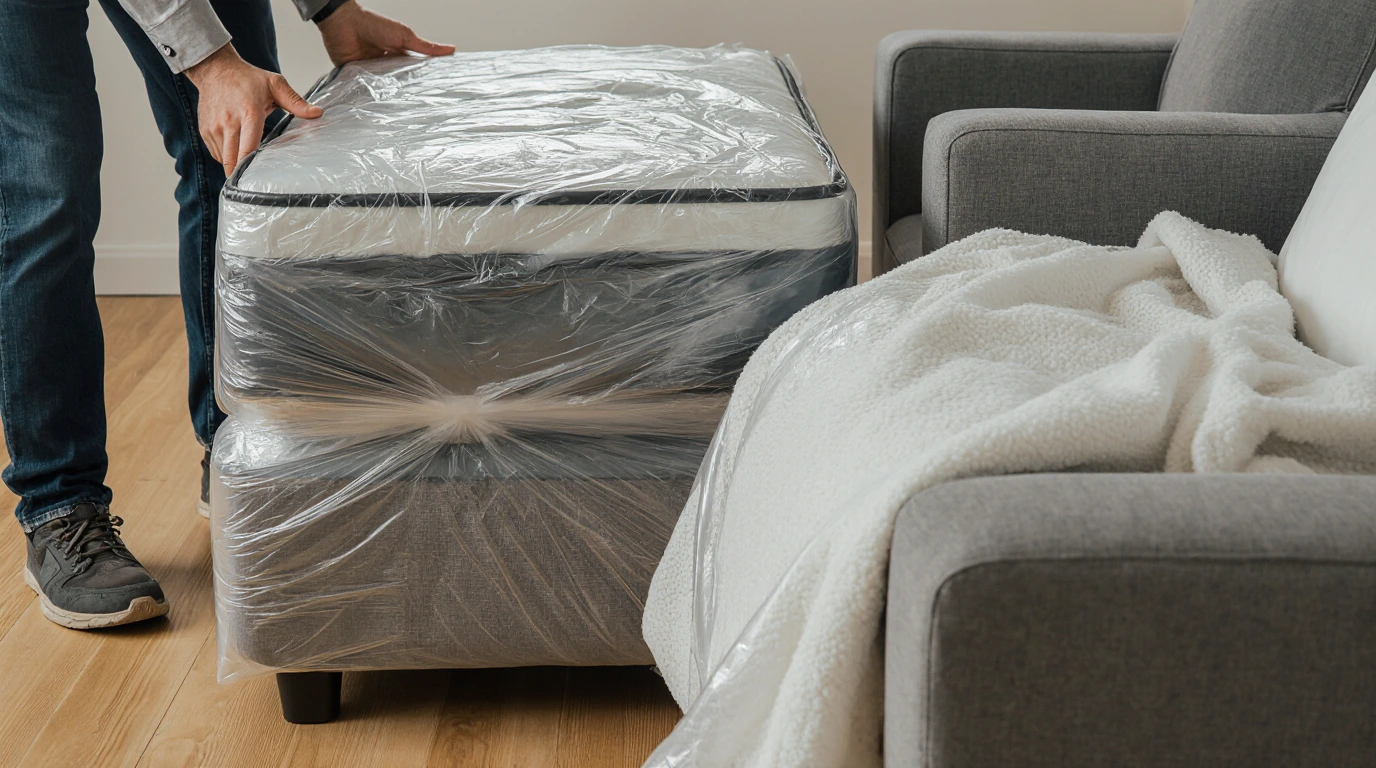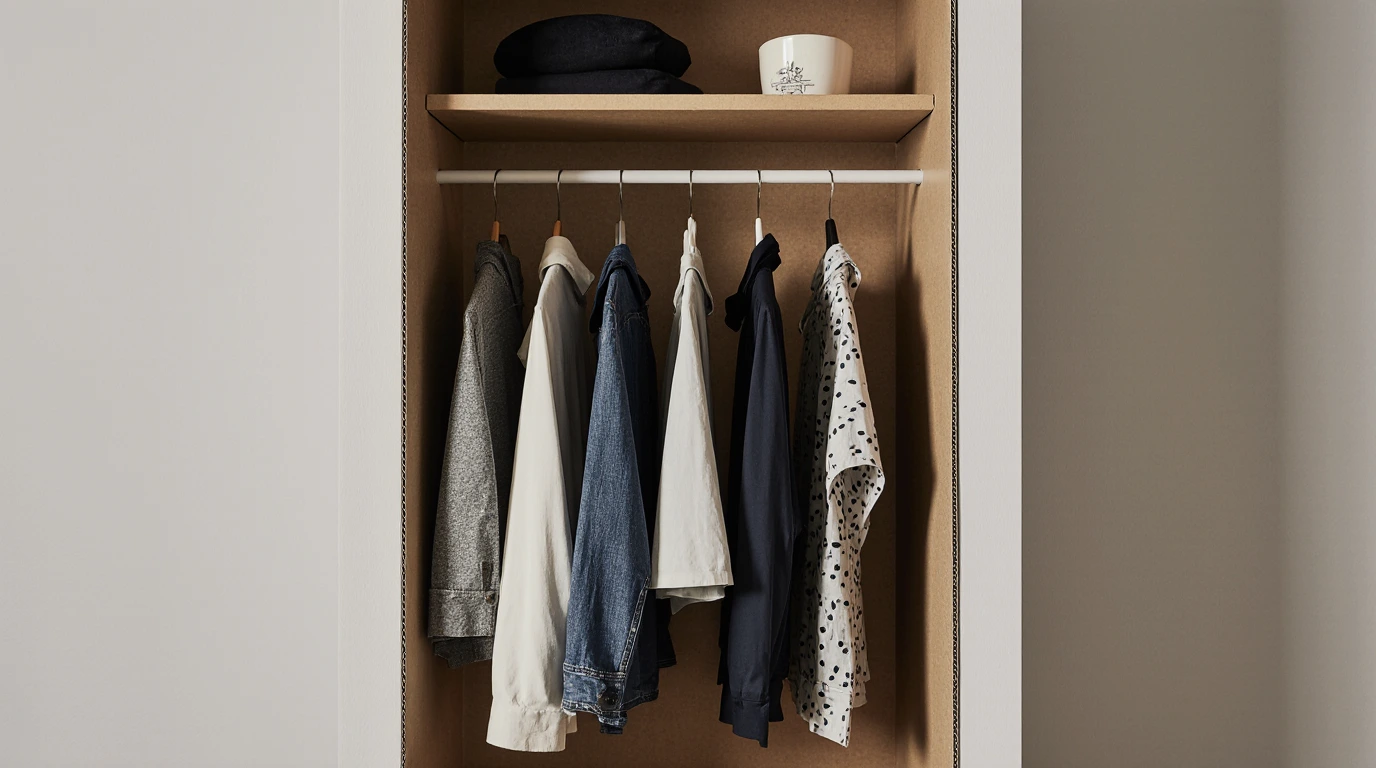For many families, plants are more than just decorations—they are part of the home. But moving them can be tricky. Plants are fragile, sensitive to changes in temperature, and sometimes even restricted by state regulations. This guide will explain how to move plants safely and when it may be better to leave them behind or gift them to someone else.
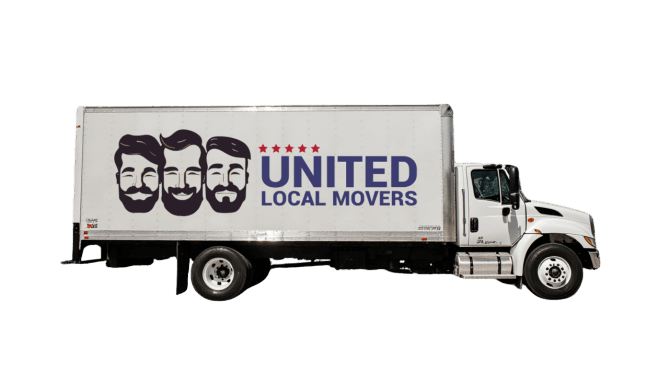
Ready to get moved? Get a FREE quote now
Book your move easily and stress-free!
Preparing Plants for a Move
- Prune and clean: Trim dead leaves and remove pests a week before moving.
- Repot if needed: Switch from heavy ceramic pots to lightweight plastic ones for transport.
- Water smartly: Water lightly two days before moving so soil is damp, not soggy.
Transporting Plants Safely
- Pack small plants in open-top boxes with padding to keep pots stable.
- Use paper to cushion soil and prevent spills.
- Keep plants upright during the move—never lay them sideways.
- For long-distance moves, transport them in your own car instead of the moving truck.
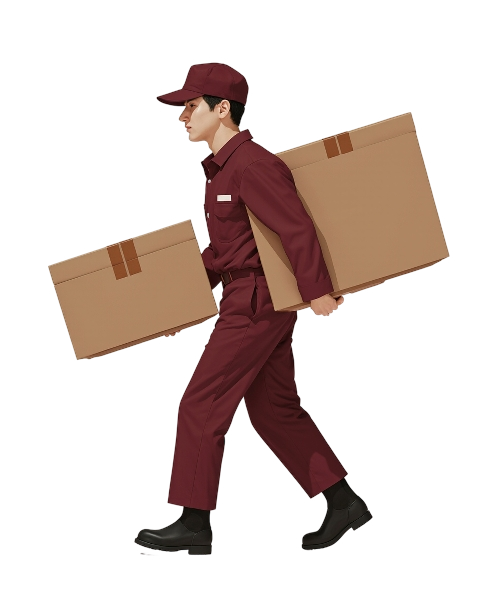
Ready to get moved? Get a FREE quote now
Ready to get moved? Get a FREE quote now
Climate and Seasonal Considerations
Extreme heat or cold can damage plants quickly. If you’re moving during summer, avoid leaving plants in vehicles for long. In winter, wrap pots in blankets to protect roots from freezing.
When Not to Move Plants
- Crossing state lines: Some states (like California, Florida, and Arizona) have strict agricultural restrictions. Always check USDA or state regulations first.
- Long storage: Plants don’t survive in moving trucks or storage units for days.
- Large, fragile plants: Sometimes it’s better to gift them to friends or donate them locally.
Extra Tips for Plant Lovers
- Label boxes clearly as “Live Plants.”
- Keep a spray bottle handy to mist leaves on long trips.
- Plan to unpack and place plants near light as soon as possible in your new home.
How United Local Movers Can Help
At United Local Movers, we advise customers on the best ways to relocate plants safely. While regulations often prevent us from moving plants in trucks, we guide you through preparation, packing, and transport methods to keep them healthy. If needed, we can also suggest alternatives for handling plants during your relocation.
Final Thoughts
Moving plants requires extra care, but with the right preparation, they can thrive in your new home. Knowing when not to move them is just as important—sometimes leaving them behind is the better choice.

